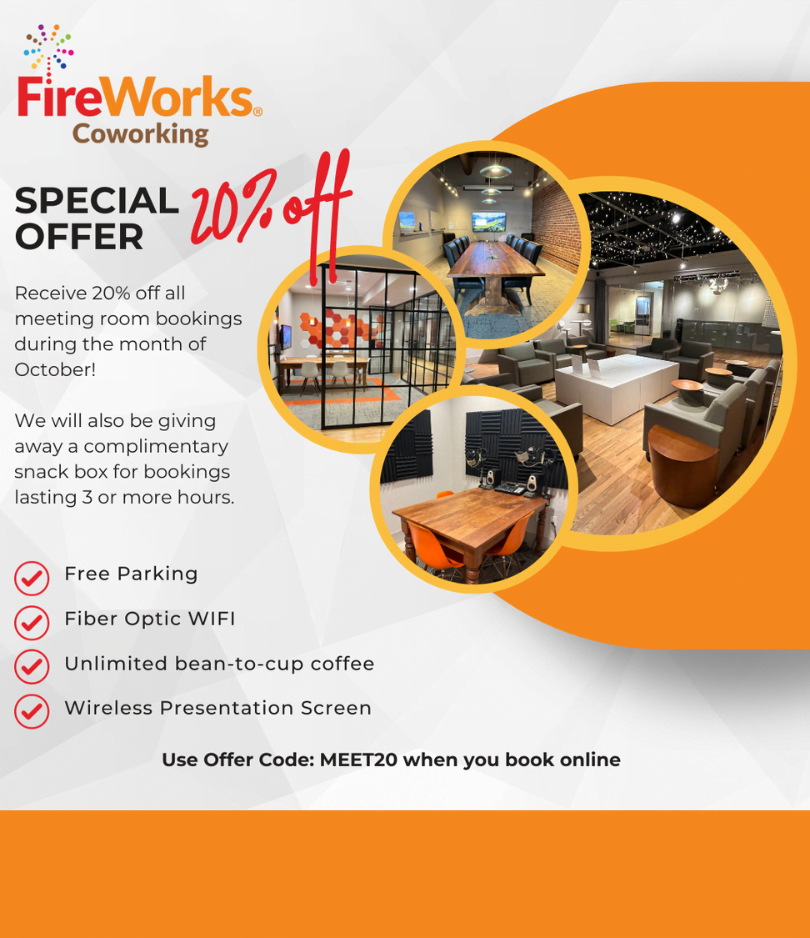Igniting Connections through Effective Communication
In our fast-paced world, where messages fly at the speed of light and conversations happen in the blink of an eye, one skill remains timeless and invaluable: effective communication. Whether you’re navigating the intricacies of the professional landscape or seeking to strengthen personal relationships, the ability to convey your thoughts, feelings, and ideas with clarity and empathy can make all the difference.
Communication isn’t just about words; it’s about connecting with others on a profound level, understanding their perspectives, and fostering collaboration. It’s the warm smile that welcomes a stranger, the friendly voice that reassures a colleague, and the genuine interest that sparks a meaningful conversation.
Together, we will explore three extremely powerful strategies that will enhance your communication skills. As we delve into the art of active listening, the magic of clarity, and the subtleties of nonverbal cues, you’ll discover how these practices can ignite connections in both your personal and professional lives.
1. Clarity and Simplicity: The Art of Clear Communication
Imagine this scenario: You’re in the midst of a lively conversation, but suddenly, you find yourself tangled in a web of complicated words and jargon. You’re not alone; we’ve all been there. In the world of communication, simplicity is a superpower that can transform your interactions.
Why Clarity and Simplicity Matter
Effective communication is like a well-crafted painting – it conveys its message with simplicity, yet it leaves a lasting impression. In both personal and professional spheres, the ability to express yourself clearly and sincerely is invaluable.
Guidelines for Clear Communication
Here are some practical tips to help you master the art of clear and simple communication:
Cut the Verbal Clutter: Ever heard of the phrase, “Less is more”? Apply it to your words. Trim unnecessary filler words and phrases from your sentences.
Speak in Plain Language: Avoid jargon and complex terminology unless you’re certain your audience understands them. Use everyday words that resonate with everyone.
Organize Your Thoughts: Present your ideas in a logical flow. Start with an introduction, state your main points clearly, and conclude with a concise summary.
Be Clear and Concise With Your Point: When trying to get any point across to another person follow this simple guideline to ensure that your point is never lost within the rest of your conversation. Tell your audience what you are going to talk about, tell them your point, then wrap it up by telling them what you’ve told them.
Real-World Examples
Let’s put this into perspective with some real-world examples:
Before: “We must initiate a comprehensive overhaul of our project management procedures to maximize efficiency.”
After: “Let’s improve our project management for better efficiency.”
Before: “Our marketing strategy requires a paradigm shift to align with evolving consumer trends.”
After: “Let’s adjust our marketing strategy to match changing consumer trends.”
See the difference? Simple, clear language not only ensures that your message is understood but also makes your audience more receptive.
In your journey towards effective communication, remember that clarity and simplicity are your allies. They’re the secret sauce that can turn ordinary conversations into extraordinary connections. So, let’s embrace the power of simplicity, making every word count in our pursuit of stronger relationships and meaningful interactions.
2. Nonverbal Communication: The Dance of Unspoken Words

Communication isn’t just about what you say; it’s also about what you don’t say with words. Enter the captivating realm of nonverbal communication, where your body language and facial expressions perform a silent but powerful symphony of messages.
The Unspoken Language
Imagine a world where words didn’t exist, and all you had were your gestures, expressions, and postures to convey your thoughts and feelings. In a way, that world exists in our everyday interactions, where nonverbal cues play a starring role.
Mastering Nonverbal Communication
Here’s a playful twist to improving your nonverbal communication skills:
The Eyebrow Raise: Raise an eyebrow when someone says something surprising or intriguing. It’s like adding an exclamation point to your face!
The Mirroring Game: Ever notice how people tend to mimic each other’s body language when they’re in sync? Try mirroring the gestures and movements of the person you’re speaking with – it creates an instant connection.
The Smile Challenge: Challenge yourself to smile more during conversations. It’s contagious and spreads warmth, making you instantly approachable.
The Power of Eye Contact: Maintain eye contact, but not in a creepy way! A friendly gaze conveys interest and engagement.
Gestures That Speak Volumes: Emphasize your points with hand gestures – it adds a dynamic element to your conversation.
Have you ever watched a mime artist perform on the street? Their entire act is built on nonverbal communication! Just like a skilled mime, you too can use your body language to captivate your audience and convey emotions without uttering a word.
Remember, nonverbal communication is the secret ingredient that can turn a dull conversation into an engaging one. So, don’t be afraid to let your body do the talking and add a touch of playfulness to your nonverbal repertoire. It’s like having your own secret language that speaks volumes without saying a thing.
3. Active Listening: The Heart of Meaningful Connections

In the bustling world of communication, there’s a treasure hidden in plain sight – active listening. It’s not just a skill; it’s a gift you can give to others, a key to unlocking stronger relationships, and a pathway to fostering genuine connections.
The Essence of Active Listening
Think back to a conversation where you felt truly heard, where the person you were speaking with wasn’t just waiting for their turn to talk but was actively engaged in understanding you. Think about the setting and the things that the person on the other side of your conversation did to let you know they were actively listening to what you were saying. How did this make you feel? Even if the conversation was a particularly difficult one to have, I’ll bet that you left feeling fulfilled with the time that you spent with this person. That’s the magic of active listening. It goes beyond words; it’s about being present, empathetic, and fully engaged.
Practical Tips for Active Listening
So, how can you become a better active listener?
Be Fully Present: When you’re in a conversation, be there with your whole self. Put away distractions, make eye contact, and let the speaker know that their words matter.
Reflect and Paraphrase: Show that you’re not just hearing but understanding. Reflect back what you’ve heard by saying something like, “So, if I’m following you correctly…”
Ask Open-Ended Questions: Encourage the speaker to share more by asking open-ended questions. These questions invite deeper discussions and insights.
Empathize and Validate: Respond with empathy and validation. Acknowledge the speaker’s emotions and perspective. A simple, “I understand how you feel,” can make all the difference.
Active listening is the secret sauce that turns conversations into connections. It’s about creating an atmosphere where people feel valued and understood. So, as you embark on your journey of effective communication, remember that active listening is the bridge that leads to deeper and more meaningful relationships.
Ignite Connections, Master Communication
As we conclude our exploration of effective communication strategies, it’s clear that communication is the thread that weaves our personal and professional lives together. Whether through the art of clear communication, the dance of nonverbal cues, or the heart of active listening, we have the power to ignite connections that can last a lifetime.
Remember, the journey to becoming a master communicator is ongoing. Practice and feedback are your trusted companions on this path. Embrace the opportunities to refine your skills, and never underestimate the impact of genuine, heartfelt communication.
In a world where messages may be fleeting, let your words and actions leave a lasting mark. Be the warm smile that brightens someone’s day, the friendly voice that offers solace, and the earnest interest that fosters collaboration. In doing so, you not only enhance your own life but also contribute to a world where connections are built on a foundation of authenticity and empathy.
Thank you for joining us on this journey to master the art of communication. Here’s to building stronger relationships and igniting meaningful connections!






